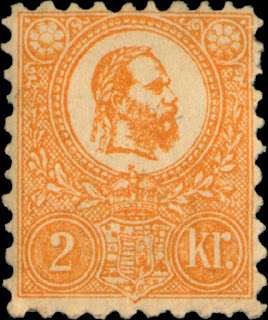Madras headgear, Martinique
Bud's Big BlueBud's Observations
There’s more to women’s headgear in Martinique than a casual
observer might suspect. And, I suspect, the two French colonial stamp engravers
who featured Martiniquan Creole headgear in their designs -- L. Colmet-Daage
and Ch. Rollet -- were clueless, too.
Scott # 62,
brown and red brown
L. Colmet-Daage, designer, 1908
The story goes back to the time immediately following the
emancipation of slaves. Freed black women, although no longer laboring on
sugarcane, banana and cocoa plantations, were still forbidden to wear hats.
Hats were considered symbols of coquetry and propriety; only white women had
the right to wear them. A 1779 ordinance
about fashion specifies: “We expressly forbid [the free people of color] to
affect through their clothing, hairstyles, dress or apparel, a reprehensible
assimilation of the way in which white men or women attire themselves.…”(1) A
black woman in a hat, the legislators must have thought, would prove
irresistible to a planter-class male.
Although hatless and suffering under other coercive
sartorial restraints, Black Creole women did want to appear distinguished and
refined. So, they added to their code-specified ensembles brightly colored
madras scarves and headpieces. Madras cloth was probably introduced by plantation
workers emigrating from India following emancipation, some of whom came from
Madras (Chennai).
The number of spikes or poufs on the headpieces, as
highlighted on Colmet-Daage’s and Rollet’s stamps, eventually came to signify the
kinds of romantic attention the wearer would accept.
Scott # 169,
imperf proof, brown violet
Ch. Rollet, designer, 1933
According to Creole tradition, one
spike announces "the heart is free for you to win;” two spikes suggest
"the heart is already taken, but luck may smile on the bold;" three
spikes mean "the heart is linked by marriage, so don’t bother;" and
four spikes say "the heart still welcomes all lovers who try.” A postcard
from the 1930s (?) illustrates these significations.
The fifth
headpiece, upper left, is ceremonial and lacks a romantic hint
Do you suppose Rollet knew what the
spikes meant? I don’t know for sure, but suspect not. French colonial stamp
designers, Rollet and Colmet-Daage included,
usually based their sketches on photographs or postcards. They weren’t
ethnologists and they didn’t use live models who might tell them about meanings
hidden in what they were drawing. Nor did they live in the colonies whose
stamps they contrived; they didn’t even visit there.
While working on her master’s degree, Mylène Florentin discovered a photograph that Rollet
probably used for #169 (see below). Her thesis on the stamps of Martinique,
well worth reading, identifies symbolic elements represented in stamps and explains
the messages they convey. (2)
Inspiration
for Ch Rollet’s 1933 design
Anonymous
© ANOM sous réserve des droits réservés aux auteurs et ayants droit
The photograph, which likely
predates the stamp by several decades, shows clothing acceptable for free black
Creoles -- white blouse, two skirts (one colorful and the other plain muslin),
and silver jewelry. The women have rejected the white cotton headpieces that
were specified in former times and donned flouncy madras. More recently, madras
headpieces have become internationally popular among style-conscious women and
political activists. Vendors gladly promote romantic interpretations of the
spikes.
Census: 98 in BB spaces, two tip-ins, 91 on supplement
pages.
(1) Quoted in Tom Reiss, The Black Count: Glory,
Revolution, Betrayal, and the Real Count of Monte Cristo. (Crown Publishing
Group, 2015), p. 44.
(2) Mylène Florentin. Les
représentations du Centre sur ses Ultra-périphéries: Le timbre-poste en
Martinique (1859-2013). (Université Paris 1 Panthéon-Sorbonne, 2014),
p 73.
Jim's Observations
Bravo Bud! I very much enjoyed the well researched essay on Madras headgear and Martinique stamp illustrations.
Unlike a certain country that has a predictable key plate design of the current monarch for all of its colonies, the French provide designs specific and appropriate for that possession, at least after the "Navigation and Commerce" issue. Vive la France! But as Bud shows, their stamp designers worked off of photographs and postcards with little true understanding of cultural meaning.
Martinique Blog Post & BB Checklist
Page 1
1a
1b
1c
Page 2
2a
2b
2c
Page 3
3a
3b
3c
Page 4
4a
4b
4c
Supplements
Page 1
Page 2
Page 3
Page 4
Comments Appreciated!


























































